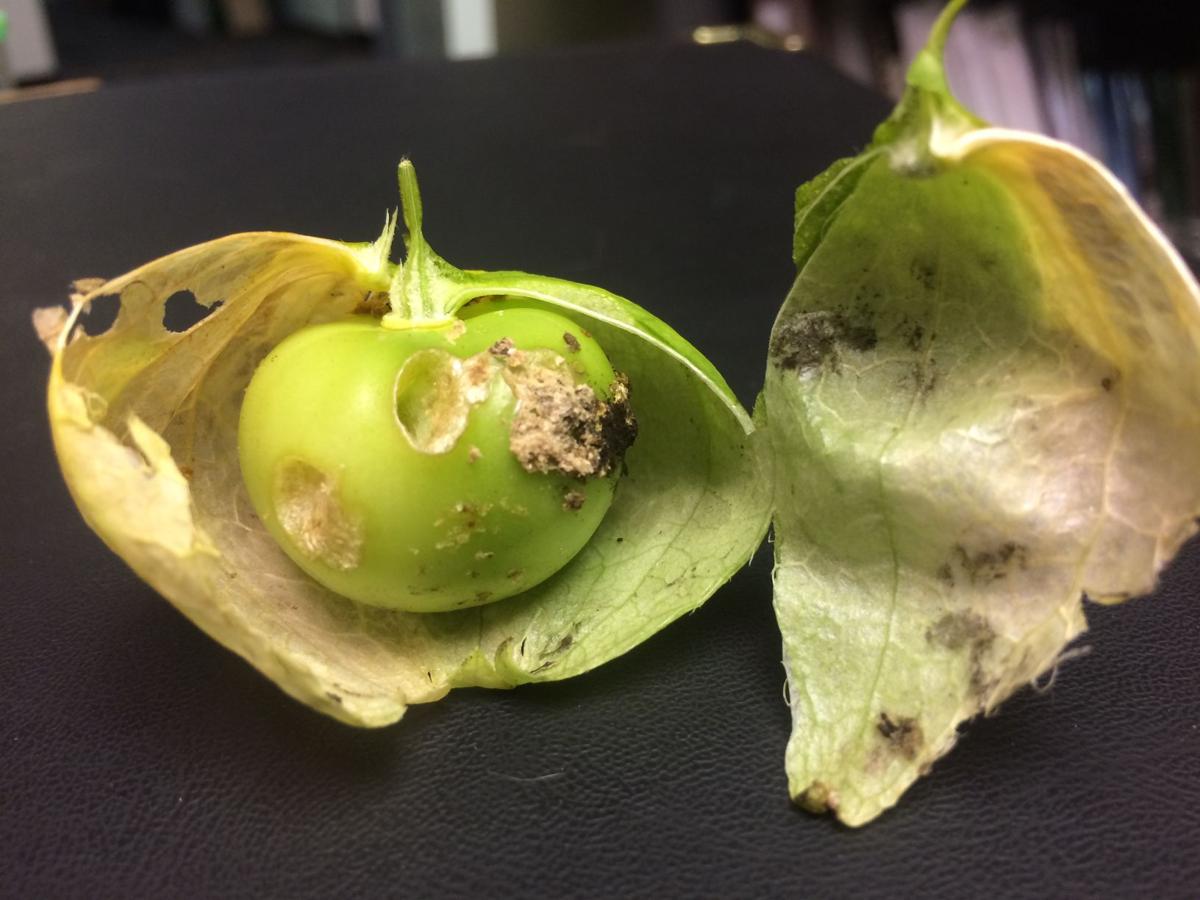Q: My tomatillos are full of holes and I can’t figure out what happened. What should I do to prevent this next time?
A: The culprit that damaged your tomatillos is the tomato fruitworm (Heliothis zea) aka the corn earworm. This is a common pest of these plants across the U.S.
Spinosad (many brands) works well on moth larvae like the tomato fruitworm, but it does nothing once larvae are already within the fruit. In your case, they are already finished and moved on to pupate in the soil. If you start seeing fruitworms in tomatoes or tomatillos, start applying spinosad every five to seven days through harvest. Focus on fruits higher up and on the outside of the plant where females prefer to lay eggs. Spinosad may be applied up to one day before harvest. Since your tomatillos are already affected, make note of when you started seeing the damage so you can be prepared a few weeks in advance for the next crop.
If you have any corn still in the silking stage, you can prevent corn earworm larvae from entering the corn by spraying (or rubbing) the silk with one part Bacillus thuringiensis (many brands) to 20 parts pure oil (mineral, corn, or soybean). Start this treatment when pollination is almost complete, which is when the silk tips have begun to wilt and turn brown.
Peter L. Warren is the urban horticulture agent for the Pima County Cooperative Extension and the University of Arizona. Questions may be emailed to plwarren@cals.arizona.edu.





